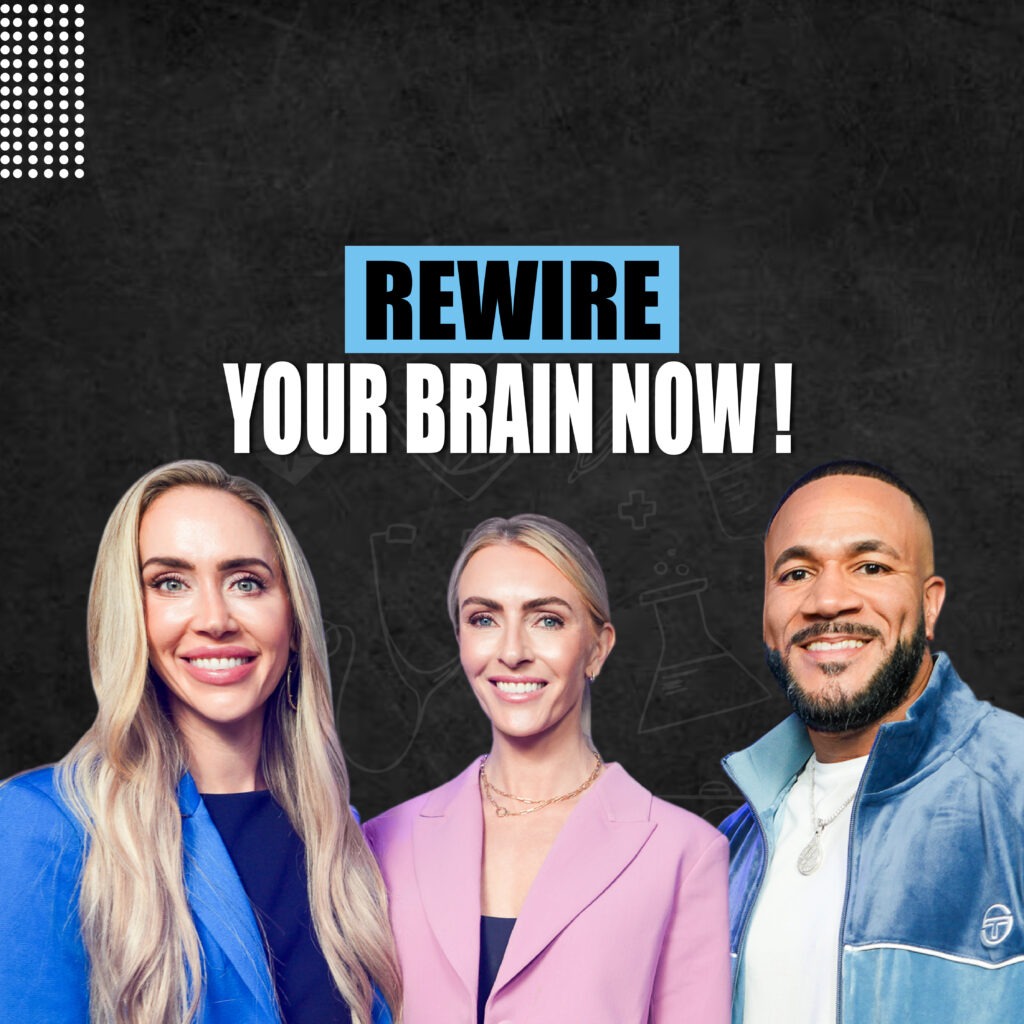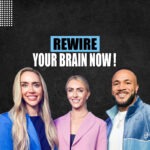Rachel Lambert, Founder and Owner of Braincode Centers, never expected a traumatic brain injury to shape her life’s mission. At 19, she suffered a skull fracture that left her in a walker and struggling with cognitive decline. When traditional medicine offered little hope, brain-based therapies helped her regain her mental sharpness, mobility, and confidence, changing not only her recovery but her entire perspective on brain health.
Her best friend, Angie Noack, now Senior VP of Business Development, had her own transformation. Diagnosed with bipolar disorder at 15, Angie spent years battling impulsivity, substance abuse, and repeated arrests. After discovering brain mapping and neurofeedback, she experienced a dramatic neurological shift. For the first time, she felt in control of her brain, instead of it controlling her.
Together, Rachel and Angie turned their personal healing journeys into a professional mission. Today, they lead Braincode Centers, one of the largest neurofeedback practices in the U.S., helping others optimize mental health, emotional balance, and peak cognitive performance.
Train Your Brain Like a Navy SEAL: Neurofeedback Secrets Revealed | Rachel & Angie | Ep. 69

On “A Healthy Point of View” podcast, Sam Tejada, CEO and Founder of Liquivida®, sat down with them to uncover how this technology is redefining how we treat anxiety, ADHD, trauma, and more, starting at the source: the brain.
So, What Exactly Is Neurofeedback?
It starts with brain mapping (a QEEG), which reads the electrical activity in the brain, identifying areas that are overactive or underactive. From there, a custom protocol is created using neurofeedback: a process that rewards the brain for shifting into optimal patterns using auditory and visual cues.
Think of it like training a dog or teaching a baby to walk. The brain loves reward. When it performs a desired pattern, like shifting out of an anxious state, it gets a signal: the screen brightens, and the audio plays. Over time, the brain adapts and rewires itself toward balance.
This is not stimulation or external input. “Nothing goes into the brain,” says Angie. “It’s your brain doing the work; we just give it feedback.”
The Science Behind the Waves
There are five key brainwaves:
- Delta (deep sleep),
- Theta (meditation and daydreaming),
- Alpha (transition and flow),
- Beta (focus and motivation),
- High Beta (anxiety and hypervigilance).
Most people are unknowingly stuck in high beta, operating in a low-grade state of fight-or-flight. Neurofeedback can teach the brain to self-regulate, creating more ease, focus, calm, and productivity.
Beyond Mental Health: The Edge of Peak Performance
Braincode Centers doesn’t just treat trauma; they’re redefining performance for CEOs, pro athletes, first responders, and children alike.
- Athletes use neurofeedback to shave milliseconds off reaction times, sharpen focus, and control nerves.
- Executives use it to combat decision fatigue, improve clarity, and sleep better.
- Children struggling with ADHD or emotional dysregulation find new balance, often reducing or eliminating the need for medication.
Sam, a former firefighter, was especially drawn to how the therapy helps first responders manage PTSD and chronic sleep issues. “These guys are not on their 15th marriage anymore,” Angie said. “They’re finally sleeping, functioning, and healing.”
A Smarter Approach to ADHD and Addiction
Rachel and Angie also debunk common misconceptions, like the overdiagnosis of ADHD. Many children prescribed stimulants don’t actually show the neurological patterns of ADHD on their brain maps. Instead, they may be overstimulated or anxious, conditions worsened by the very meds they’re prescribed.
Similarly, addiction often stems from the brain trying to self-regulate. Neurofeedback doesn’t magically remove cravings, but it can help a person understand why they’re reaching for a substance and build the capacity to choose differently.
Children, Trauma & The Power of Early Intervention
With 30% of their clients being children, Braincode Centers sees firsthand how early intervention can change the trajectory of a child’s life. From emotional outbursts to academic struggles, many issues can be traced back to neurological dysregulation, sometimes from trauma, sometimes from developmental patterns.
The technology isn’t just effective, it’s empowering. “A brain map is like a visual form of grace,” says Rachel. “It helps people understand why they feel the way they do. And from there, they can begin to change.”
Breaking the Mental Health Mold
Psychology is one of the few medical fields where we don’t actually measure the organ we’re treating. Unlike a broken bone or a torn muscle, mental health diagnoses are too often based on subjective questionnaires. With neurofeedback, clients get a clear, measurable look at their brain and a pathway forward.
The Tech: Scalable, Personalized, and At-Home
What began as an in-person clinical operation has now scaled into a remote solution using a wearable EEG headband and a smartphone app. Clients anywhere can now train their brains from the comfort of their homes, with results that are quantified and trackable.
Many even pair the system with wearables like the Oura Ring, tracking improvements in sleep quality, heart rate variability, and readiness scores as their brains rewire.
Future-Focused: AI, Accessibility, and Advocacy
Braincode Centers is integrating AI into protocol customization, helping scale personalization while maintaining clinical integrity. But what matters most to them isn’t just the tech, it’s access.
Insurance rarely covers neurofeedback. Yet Braincode remains committed to reaching underserved populations, offering payment plans, working with nonprofits, and giving back 10% of profits to first responder and adoption-related causes.
They’re also fighting for awareness, because many people simply don’t know these tools exist. “We want to make brains sexy again,” Rachel joked. “Neurofeedback deserves to be in the same conversation as therapy and medication.”
The Bigger Mission: Make America Healthy Again
As proud supporters of the MAHA Movement (Make America Healthy Again), Rachel and Angie believe you can’t create lasting wellness without addressing the brain.
We’ve optimized our workouts, our diets, even our supplements. It’s time to optimize our minds.
“We’re not just trying to fix broken brains,” Rachel says. “We’re helping people tap into their fullest potential, whether that’s sleeping better, focusing longer, or simply feeling more like themselves again.”
Mental health isn’t just emotional, it’s electrical. With the right tools, your brain can learn to heal, self-regulate, and thrive. And that changes everything.

